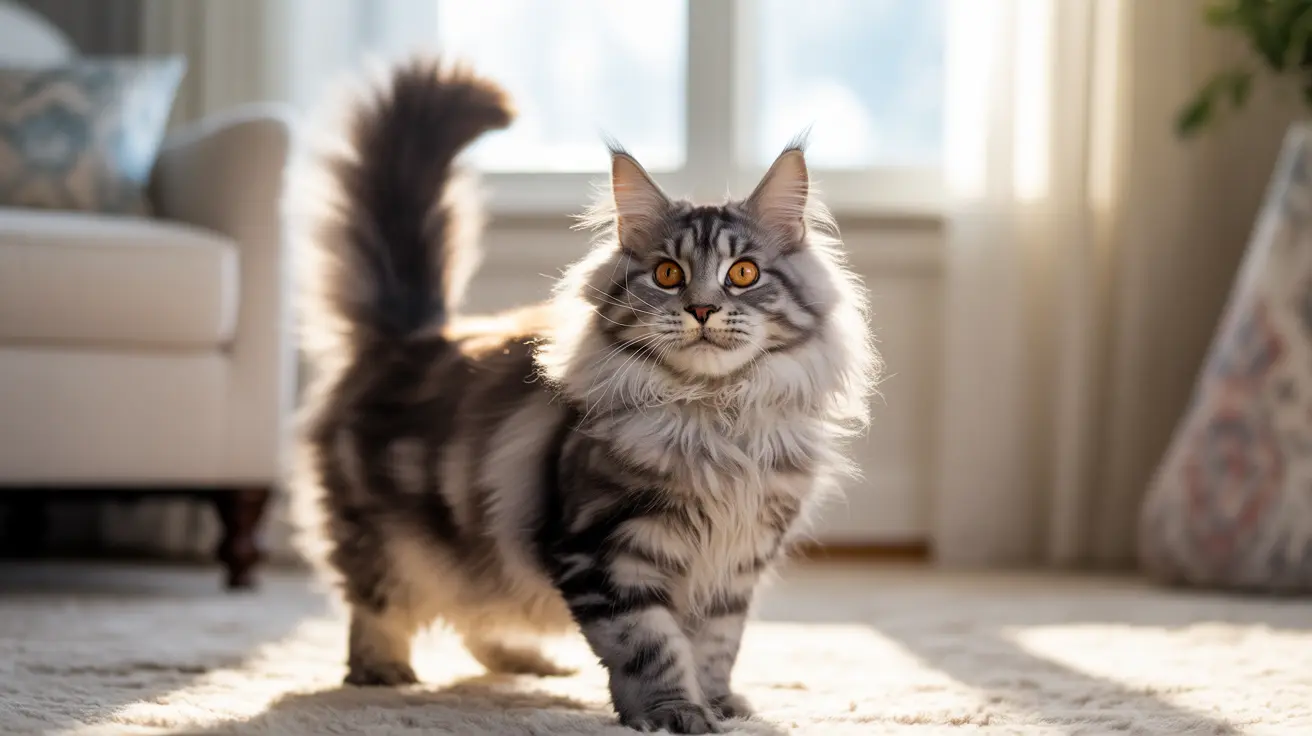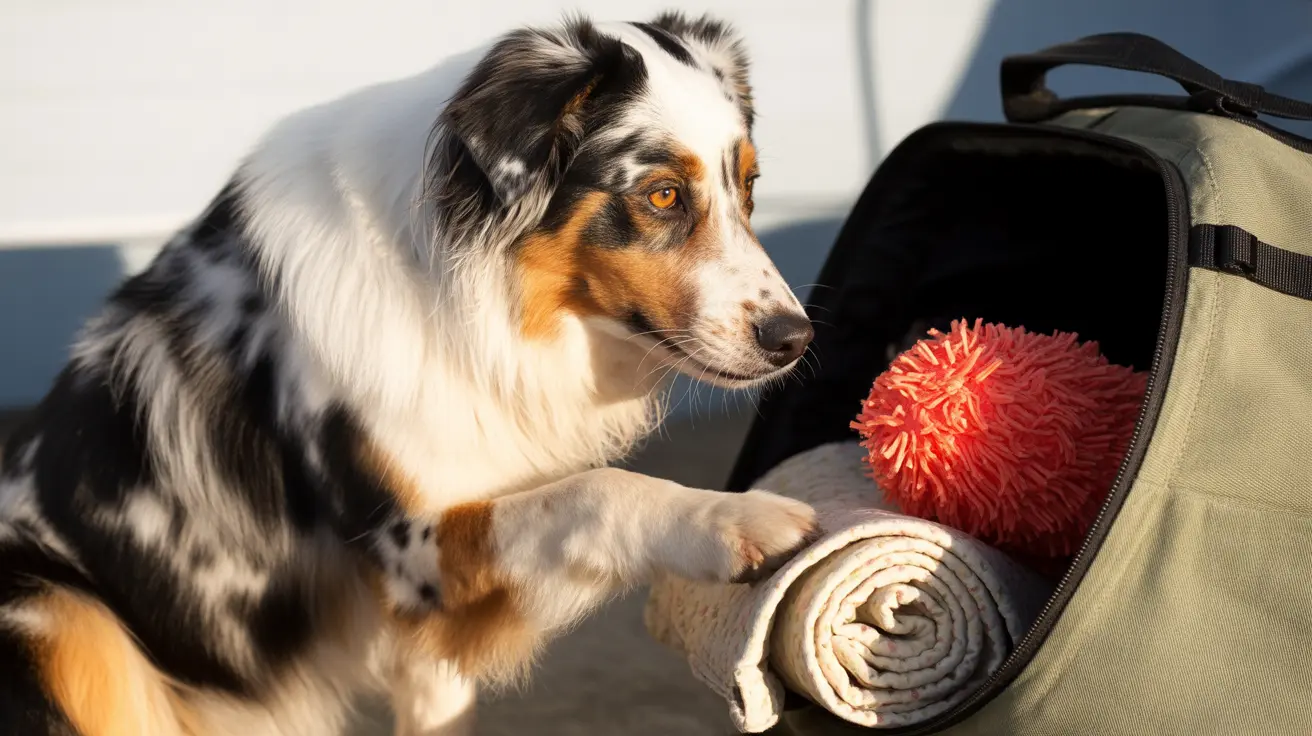Recognizing Dementia in Pets: A Complete Guide to Cognitive Decline in Dogs and Cats
As our beloved companion animals live longer, healthier lives, pet owners are increasingly encountering a condition that was once rarely seen in veterinary practice: dementia. Just like humans, dogs and cats can develop cognitive dysfunction that goes far beyond normal aging processes. Recognizing dementia in pets requires understanding the subtle but significant differences between typical age-related changes and the progressive brain deterioration that characterizes this condition.
Pet dementia, formally known as Canine Cognitive Dysfunction (CCD) in dogs and cognitive dysfunction syndrome in cats, mirrors many aspects of Alzheimer's disease in humans. This gradual, progressive syndrome affects older pets through age-related brain damage, including the buildup of beta-amyloid plaques that interfere with neuron function, memory, learning, and spatial awareness. While dogs aged 11 and older face the highest risk, cats typically begin showing signs around age 10, making early recognition crucial for maintaining quality of life.
Understanding how to identify and manage dementia in aging pets can make the difference between attributing concerning behavioral changes to "just getting old" and implementing effective interventions that can slow disease progression and improve your pet's remaining years.
Understanding Pet Dementia vs. Normal Aging
The key to recognizing dementia in pets lies in understanding how cognitive dysfunction differs from typical age-related changes. While normal aging might bring about slower movement, reduced energy, or minor changes in sleep patterns, dementia involves significant alterations in cognition and behavior that interfere with daily functioning.
Pet dementia is characterized by the same type of brain deterioration seen in human Alzheimer's disease. The buildup of beta-amyloid plaques disrupts normal neuron communication, leading to progressive impairment in memory, learning ability, and spatial awareness. This process goes beyond the mild cognitive changes that naturally occur with aging and represents a pathological condition requiring medical attention.
Dogs and cats with dementia experience fundamental changes in how their brains process information and respond to familiar situations. Unlike normal aging, where pets might simply move more slowly or sleep more, dementia creates confusion, disorientation, and significant behavioral alterations that weren't present in the pet's younger years.
Key Signs and Symptoms of Pet Dementia
Disorientation and Confusion
One of the most telling signs of dementia in pets is disorientation within familiar environments. Dogs may engage in aimless wandering, appearing lost in their own homes or yards. They might forget the location of their food and water bowls, or stand facing walls and corners as if confused about where they are. Cats similarly may seem lost in familiar spaces, showing uncertainty about the location of their litter box or favorite resting spots.
Changes in Social Interaction and Behavior
Pets with dementia often experience altered social interactions that can be particularly distressing for owners. Previously friendly animals may become withdrawn or, conversely, more clingy and anxious. Some pets develop increased aggression or fearfulness, while others may fail to recognize family members or show reduced interest in interaction. These behavioral changes represent significant departures from the pet's established personality and social patterns.
Sleep-Wake Cycle Disruptions
Disrupted sleep patterns are hallmark symptoms of pet dementia. Many affected animals become more restless during evening hours or throughout the night, a phenomenon similar to "sundowning" in human dementia patients. Dogs may pace, vocalize, or appear agitated when they should be resting. This disruption often leads to increased daytime sleeping, creating a reversed sleep-wake cycle that can be exhausting for both pets and their owners.
House Soiling and Forgotten Training
Previously house-trained pets may begin having accidents indoors, not due to physical incontinence but because they've forgotten their training or can't remember where they should eliminate. Dogs might forget previously learned commands or tricks, while cats may stop using their litter boxes consistently. These changes represent memory loss and confusion rather than defiance or physical problems.
Increased Anxiety and Vocalization
Many pets with dementia develop heightened anxiety levels, often manifesting as excessive barking or meowing at seemingly nothing. This increased vocalization may occur more frequently during evening hours and can include panting, pacing, or other signs of distress. The anxiety stems from confusion and disorientation as familiar environments begin to feel foreign.
Differentiating Dementia from Other Medical Conditions
Recognizing dementia in pets requires careful differentiation from other medical conditions that can cause similar symptoms. Many health issues common in senior pets can mimic cognitive dysfunction, making professional veterinary evaluation essential for accurate diagnosis.
Physical conditions such as liver disease, kidney disease, infections, and arthritis can all cause behavioral changes that might be mistaken for dementia. Hyperthyroidism in cats, hypertension, and chronic kidney disease frequently affect senior felines and can produce symptoms similar to cognitive dysfunction. Brain tumors, though less common, can also cause confusion and behavioral alterations.
Veterinarians diagnose pet dementia primarily through behavioral history and the process of elimination, ruling out other medical problems through comprehensive diagnostic work. This may involve physical examinations, blood work, X-rays, and sometimes advanced imaging like CT scans. The diagnostic process ensures that treatable conditions aren't overlooked and that the management approach addresses the pet's actual underlying condition.
Implementing Mental Stimulation Strategies
Mental stimulation plays a crucial role in managing pet dementia and can help slow cognitive decline. The goal is to keep the brain active without overwhelming the pet, requiring a careful balance between engagement and rest.
Daily Exercise and Variety
Maintaining physical activity through slow, gentle walks provides both mental and physical stimulation for dogs with dementia. Varying the route occasionally can offer new sensory experiences, though dramatic changes should be avoided to prevent confusion. The key is providing enough stimulation to engage the mind while maintaining familiar routines that offer comfort and security.
Food-Based Mental Exercises
Hiding food or using treat puzzles can provide excellent mental stimulation for pets with dementia. These activities engage problem-solving skills and can help maintain cognitive function. However, the complexity should be appropriate for the pet's current cognitive abilities – puzzles that are too challenging may increase frustration and anxiety.
Training and Command Practice
Teaching new, simple commands or practicing familiar ones can help maintain neural pathways and provide mental engagement. Keep training sessions short and positive, focusing on success rather than perfection. This approach helps maintain the human-animal bond while providing cognitive stimulation.
Dietary and Nutritional Support
Nutrition plays a vital role in supporting cognitive function in pets with dementia. Veterinary therapeutic diets specifically designed for cognitive support contain antioxidants and medium-chain triglycerides that may help brain function.
Beneficial supplements include Omega-3 fatty acids, vitamin E, coenzyme Q10, and SAMe (S-adenosylmethionine). These nutrients support brain health and may help slow cognitive decline. However, any dietary changes or supplement additions should be made under veterinary guidance to ensure they're appropriate for the individual pet's health status and don't interact with other medications.
It's important to note that managing a pet with dementia doesn't simply involve reducing food intake. Instead, the focus should be on providing high-quality nutrition that supports brain health while maintaining appropriate body weight and overall physical condition.
Medical Treatment Options
While there's no cure for pet dementia, several medications can help manage symptoms and potentially slow progression. Selegiline is the most commonly prescribed medication for cognitive dysfunction in both dogs and cats, helping to improve symptoms by affecting neurotransmitter levels in the brain.
Additional medications may be used to address specific symptoms. Gabapentin can help manage anxiety in cats, while various anti-anxiety medications may be beneficial for dogs experiencing increased stress and agitation. All medications must be carefully managed by a veterinarian to avoid harmful interactions and ensure appropriate dosing.
The goal of medical treatment is to improve quality of life rather than cure the condition. Early intervention often provides the best results, emphasizing the importance of seeking veterinary care as soon as symptoms are noticed.
Environmental Management for Advanced Stages
As dementia progresses, environmental stability becomes increasingly important for pet safety and comfort. Maintaining a consistent physical environment helps reduce confusion and anxiety in pets struggling with cognitive decline.
Avoid rearranging furniture or making significant changes to the pet's living space. Night lights can help pets navigate familiar areas after dark, while confining them to safe spaces can prevent wandering and potential injury. For cats that previously went outdoors, keeping them indoors becomes essential as their ability to navigate and find their way home diminishes.
Ensuring pets have proper identification through microchips and current registration becomes crucial as disorientation increases the risk of getting lost. Even indoor pets should be properly identified in case they accidentally get outside.
Supporting Pet Owners Through the Journey
Caring for a pet with dementia can be emotionally challenging for owners, who must watch their beloved companion experience cognitive decline. Understanding that behavioral changes result from a medical condition rather than willful misbehavior helps owners respond with patience and compassion.
Establishing realistic expectations is important – while treatments can slow progression and improve quality of life, dementia is a progressive condition that will continue to advance. Focusing on maintaining comfort, safety, and the human-animal bond becomes the primary goal rather than expecting improvement or cure.
Regular veterinary check-ups, ideally every six months for senior pets, help monitor disease progression and adjust treatment approaches as needed. These visits also provide opportunities for owners to discuss concerns and receive guidance on management strategies.
Frequently Asked Questions
- Q: At what age do pets typically develop dementia?
Dogs typically begin showing signs of cognitive dysfunction around 11 years of age or older, while cats generally develop symptoms around 10 years of age. However, the exact timing can vary significantly between individual pets.
- Q: Can pet dementia be prevented?
While there's no guaranteed way to prevent pet dementia, maintaining lifelong mental stimulation, regular exercise, and good nutrition may help support cognitive health. Early intervention when symptoms first appear can help slow progression.
- Q: How long do pets typically live after a dementia diagnosis?
Life expectancy after diagnosis varies considerably but is typically a few years. The progression is usually slow, and with proper management, many pets maintain a good quality of life for an extended period.
- Q: Is pet dementia more common in certain breeds?
While any dog or cat can develop cognitive dysfunction, it appears to be more common in dogs than cats overall. There's no strong evidence suggesting specific breeds are more susceptible, though individual genetic factors may play a role.
- Q: Should I put my pet to sleep if they have dementia?
Dementia alone is not typically a reason for euthanasia. Many pets with cognitive dysfunction can maintain a good quality of life with proper management. The decision should be based on overall quality of life and made in consultation with your veterinarian.
- Q: Can medications for pet dementia cause side effects?
Yes, medications like selegiline can have side effects and may interact with other drugs. This is why veterinary supervision is essential for all medical treatments, ensuring medications are appropriate and monitoring for any adverse reactions.
- Q: Will my pet recognize me if they have dementia?
Recognition can be affected by dementia, but many pets retain some ability to recognize family members, especially with consistent routines and interactions. The degree of recognition loss varies significantly between individual cases.
Conclusion
Recognizing dementia in pets requires understanding that significant behavioral and cognitive changes in senior animals often represent more than normal aging. By identifying symptoms early and implementing comprehensive management strategies including medical treatment, environmental modifications, mental stimulation, and nutritional support, pet owners can help slow disease progression and maintain their companion's quality of life.
The key to successful management lies in working closely with veterinary professionals to develop individualized treatment plans while maintaining realistic expectations about the progressive nature of the condition. With proper care and attention, pets with dementia can continue to enjoy meaningful relationships with their families while living comfortably despite their cognitive challenges.






